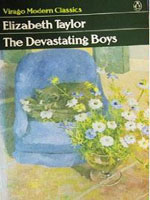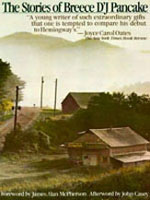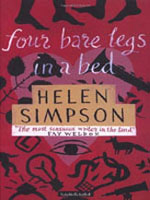Short Stories: Known and Rediscovered
by Andrew Corbin, Acquisitions and Reference Librarian
This article originally appeared in the "Off the Shelf: A Reader's Review" column in the Library's Summer 2012 Features Newsletter.
"A good short story should not have less meaning than a novel, nor should its action be less complete. Nothing essential to the main experience can be left out of a short story.... A short story should be long in depth and should give us an experience of meaning."
- Flannery O'Connor, "Writing Short Stories"
The short story has its devotees, to be sure, but it also has its detractors, those who feel it can never attain the emotional depth or structural sophistication of the novel. There are also those readers who are perfectly happy to dip into short stories as an interim measure while deciding what novel to read next. With the following suggestions, we hope to convince any doubters that the short story is as flexible and satisfying an art form as the novel, and also hopefully introduce the already converted to some lesser-known writers.
The Classics
Like any literary genre, the short story has its own canon, writers whose mastery of the form is beyond dispute and with whom our members are undoubtedly familiar: Anton Chekhov ("The Lady With the Little Dog"), Flannery O'Connor ("A Good Man is Hard to Find"), Katherine Mansfield ("The Daughters of the Late Colonel"), James Joyce ("The Dead"), Alice Munro ("Runaway"), William Trevor ("The Piano-Tuner's Wives"). These writers all produced bodies of work as complex, emotionally resonant, and intellectually engaging as the weightiest of novels, and like all great works of art, they are well worth revisiting. I guarantee that if it has been a while since you have read any Edgar Allan Poe or O. Henry, just pick up "The Tell-Tale Heart" or "The Gift of the Magi" and you will be amazed at how fresh and affecting they still are.
Elizabeth Taylor (1912-1975)
 Sharing a name with one of the world's most famous movie stars can't have made the writing career of the English writer Elizabeth Taylor easy, and it hasn't exactly helped her posthumous reputation either. In a recent appreciation of Taylor's work written for the Telegraph, contemporary novelist Philip Hensher notes: "Even now, one always has to refer to her as Elizabeth-Taylor-the-novelist in conversation." And while Taylor's novels, particularly the sublime Mrs. Palfrey at the Claremont, have more than their fair share of enthusiasts among the Library's membership, her collections of short stories, most of which were published in the New Yorker, are perhaps less well-known. This is a shame, as they exhibit every bit as much of the wit, keen observation, and emotional subtlety that Taylor's novels are known for. Her 1972 collection The Devastating Boys is particularly strong and would be a good place to start. Though her work was often dismissed during her lifetime as too polite and genteel, Taylor's sly irony and sharp eye for human folly, both of which are abundantly on display in her stories, are appreciated by more discerning readers.
Sharing a name with one of the world's most famous movie stars can't have made the writing career of the English writer Elizabeth Taylor easy, and it hasn't exactly helped her posthumous reputation either. In a recent appreciation of Taylor's work written for the Telegraph, contemporary novelist Philip Hensher notes: "Even now, one always has to refer to her as Elizabeth-Taylor-the-novelist in conversation." And while Taylor's novels, particularly the sublime Mrs. Palfrey at the Claremont, have more than their fair share of enthusiasts among the Library's membership, her collections of short stories, most of which were published in the New Yorker, are perhaps less well-known. This is a shame, as they exhibit every bit as much of the wit, keen observation, and emotional subtlety that Taylor's novels are known for. Her 1972 collection The Devastating Boys is particularly strong and would be a good place to start. Though her work was often dismissed during her lifetime as too polite and genteel, Taylor's sly irony and sharp eye for human folly, both of which are abundantly on display in her stories, are appreciated by more discerning readers.
Angela Carter (1940-1992)
When Angela Carter died in 1992, the literary world lost one of its most unique and challenging voices. Like Elizabeth Taylor, Carter was also a successful novelist; her 1991 Wise Children is a comic masterpiece about twin chorus girls Dora and Nora Chance and their endlessly bizarre family. Unlike Taylor, however, it is her short stories for which Carter is best known. Her most famous collection is undoubtedly The Bloody Chamber (included in Burning Your Boats: The Collected Short Stories), which generated considerable attention when it was first published in 1979 and has become a staple in literature courses ever since. The ten stories in The Bloody Chamber are frequently described as feminist retellings of folktales, though as Carter notes, she had something far more ambitious in mind: "My intention was not to do 'versions' or, as the American edition of the book said, horribly, 'adult' fairy tales, but to extract the latent content from the traditional stories and to use it as the beginnings of new stories." And while they do have echoes of the familiar and archetypal, her stories are never quaint or charming. They are subversive, gorgeously written, and fiercely intelligent meditations on the violent sexuality lurking beneath the surface of some of our most cherished childhood stories. To read Angela Carter is to enter her world, and what a fascinating world it is.
Breece D'J Pancake (1952-1979)
 The name Breece D'J Pancake is distinctive enough that once heard, it is impossible to forget. The problem is, as the author of just one collection of short stories, his name rarely comes up in literary conversations. Pancake was born and raised in coal-mining country in West Virginia, a region which features prominently in his work. During his lifetime he published only six stories, the majority of which appeared in the pages of the Atlantic Monthly. He is perhaps best known for "Trilobytes," the story of a young man trying to convince his widowed mother not to sell the family farm. It is typical of his style- lean yet dense with vivid poetic imagery, and with a tense awareness of the constant threat of violence in hardscrabble West Virginia. Sadly, Pancake committed suicide in 1979 at the age of 27, but his reputation has grown with the passing of time.
The name Breece D'J Pancake is distinctive enough that once heard, it is impossible to forget. The problem is, as the author of just one collection of short stories, his name rarely comes up in literary conversations. Pancake was born and raised in coal-mining country in West Virginia, a region which features prominently in his work. During his lifetime he published only six stories, the majority of which appeared in the pages of the Atlantic Monthly. He is perhaps best known for "Trilobytes," the story of a young man trying to convince his widowed mother not to sell the family farm. It is typical of his style- lean yet dense with vivid poetic imagery, and with a tense awareness of the constant threat of violence in hardscrabble West Virginia. Sadly, Pancake committed suicide in 1979 at the age of 27, but his reputation has grown with the passing of time.
Helen Simpson (1957-present)
 Already celebrated as a master of the short story in her native England, Helen Simpson is only just beginning to attract wide attention in the United States. Starting with her first collection in 1990, Four Bare Legs in a Bed, Simpson has been writing drily humorous, perfectly pitched short stories, many of which are about contemporary women navigating - usually unsuccessfully - the fraught waters of love, motherhood, career, and marriage. These are not cheery, cozy stories, however, and they should not be dismissed as lightweight simply because they deal primarily with domestic matters. Simpson has an uncanny eye for absurdity and a knack for uncovering the bleakly comic aspects of the most ordinary situations. Anyone who values razor-sharp, unsentimental writing can find something to love in Simpson's work, particularly her 2007 collection, In the Driver's Seat.
Already celebrated as a master of the short story in her native England, Helen Simpson is only just beginning to attract wide attention in the United States. Starting with her first collection in 1990, Four Bare Legs in a Bed, Simpson has been writing drily humorous, perfectly pitched short stories, many of which are about contemporary women navigating - usually unsuccessfully - the fraught waters of love, motherhood, career, and marriage. These are not cheery, cozy stories, however, and they should not be dismissed as lightweight simply because they deal primarily with domestic matters. Simpson has an uncanny eye for absurdity and a knack for uncovering the bleakly comic aspects of the most ordinary situations. Anyone who values razor-sharp, unsentimental writing can find something to love in Simpson's work, particularly her 2007 collection, In the Driver's Seat.
David Foster Wallace (1962-2008)
There is no shame in finding the prospect of reading David Foster Wallace's 1996 novel Infinite Jest, daunting; at over a thousand pages, almost four hundred of which are endnotes, it is nothing if not intimidating. As critically-lauded and commercially successful as that massive tome is, however, Wallace also produced three collections of short stories that are every bit as inventive, complex, funny, and moving as Infinite Jest. Readers interested in exploring his work would do well to check out his 1989 debut collection, Girl With Curious Hair. Like Infinite Jest, Wallace's stories deftly merge the ridiculous with the sublime and the familiar with the deeply strange. With references to or appearances from a variety of real-life figures, including David Letterman and Lyndon Johnson, the stories in Girl With Curious Hair are as entertaining as they are intelligent, with an undercurrent of sadness that makes them far more than an exercise in post-modern trickery.

